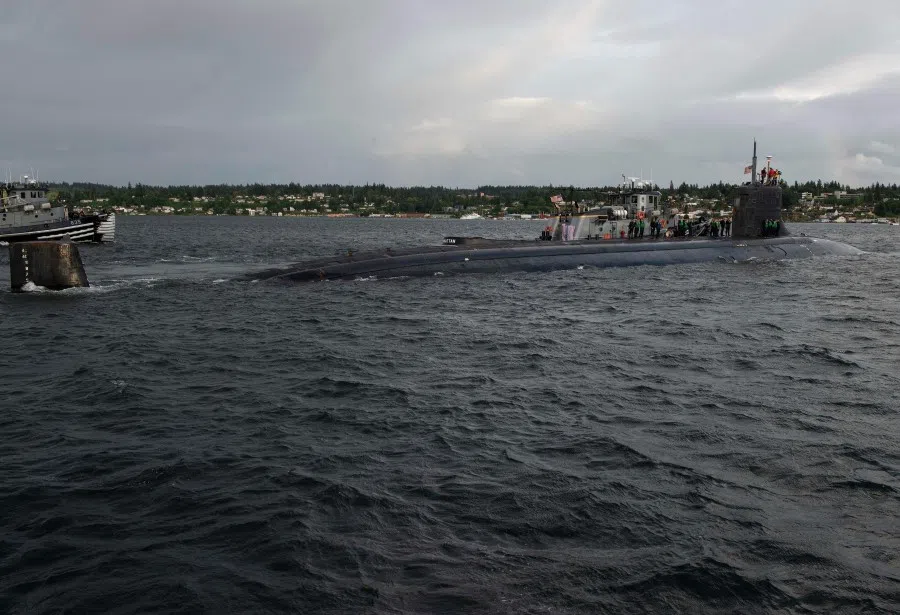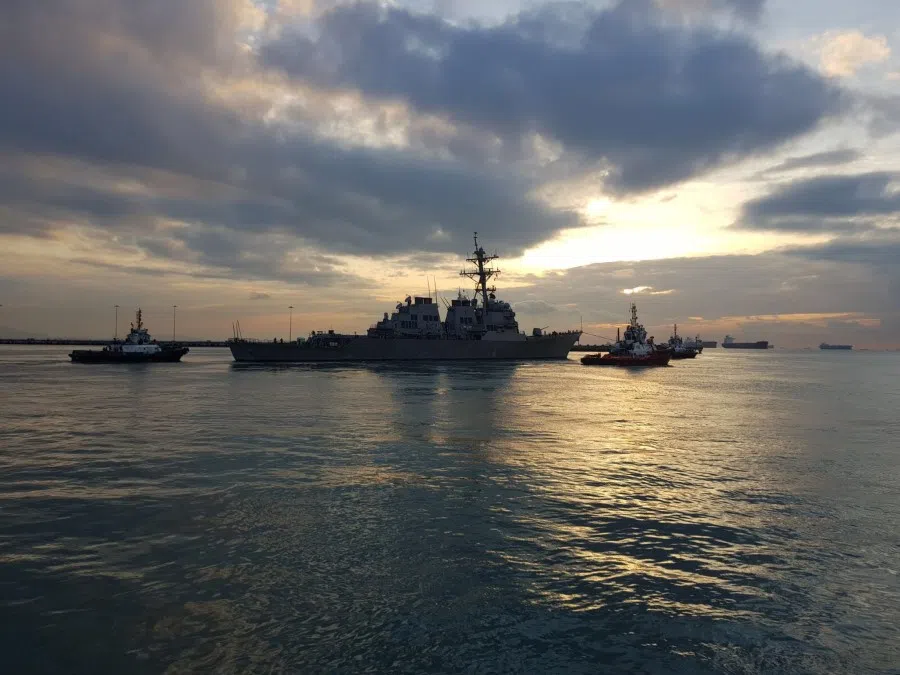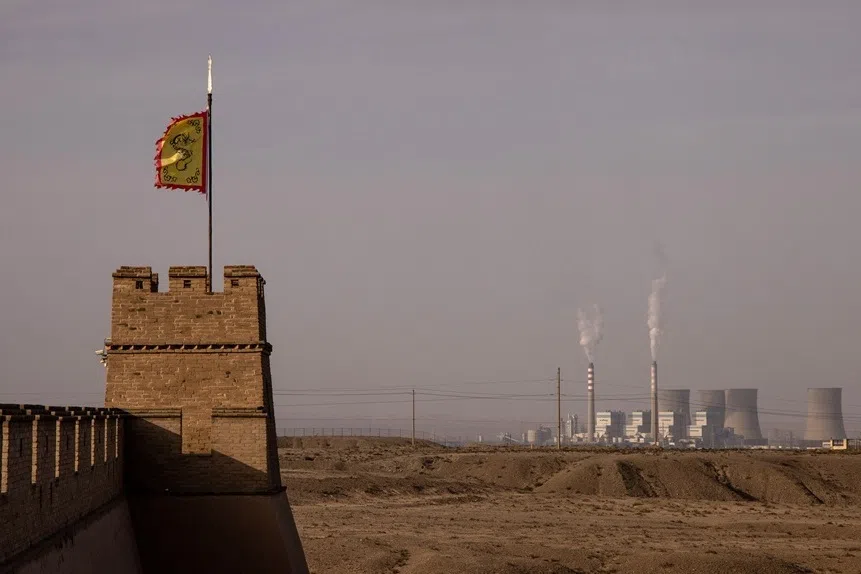Submarines overcrowding the South China Sea: A major accident could happen
In early October, the US submarine USS Connecticut hit an "uncharted seamount" underwater, prompting an investigation leading to the removal of the captain and two officers. However, this is not the only incident involving US Navy vessels, which only underscores issues such as operational demands in keeping up with China's activities, as well as the fact that the South China Sea is indeed becoming congested with submarines, with little communication between various users. ISEAS academic Ian Storey tells us more.

For the sailors aboard the US Navy's nuclear-powered submarine USS Connecticut, the events of 2 October constitute every submariner's worst nightmare.
On that day, the 9,000-tonne Seawolf-class fast-attack submarine struck an undersea mountain (known as a seamount) hundreds of feet below the pitch-black waters of the South China Sea.
Miraculously only 15 of the 116 crew members sustained injuries. The vessel's bow was crumpled, but the hull was not breached, and the nuclear reactor was undamaged. The submarine was able to surface and make its way to Guam under its own power.
Two months on, the investigation into the crash is closed, the Connecticut has been patched up and will return to its home port in Washington state to undergo further repairs.
While the incident may be over, it is worth looking at in closer detail, for the causes, responses and implications highlight several important issues pertinent to the ongoing territorial, jurisdictional and geopolitical dispute being played out in the heart of Southeast Asia.
Accidents involving submarines are surprisingly common, with 37 over the past 20 years. Since the advent of nuclear-powered submarines in the 1950s, the US Navy has lost two and Russia seven.

Let's start with the causes. A month after the accident, the US Navy confirmed that the Connecticut had hit an "uncharted seamount" and not another warship. Subsequently, the Navy concluded that the accident had been preventable. The seamount was uncharted because the constant seismic activity along the Asia-Pacific's "Ring of Fire'" occasionally throws up new seamounts. Nevertheless, the Navy sacked the captain and two other senior officers because they had failed to follow proper navigational procedures.
Accidents involving submarines are surprisingly common, with 37 over the past 20 years. Since the advent of nuclear-powered submarines in the 1950s, the US Navy has lost two and Russia seven.
An almost identical incident to the Connecticut happened in 2005 when the USS San Francisco, a Los Angeles-class nuclear submarine, collided with a seamount at full tilt near Guam. On that occasion, the submarine was almost lost; the front section of the submarine was severely damaged, one crew member died, and 98 were injured. That both submarines survived is a testament to the professionalism of the crew and the robust construction of the vessels.
But the Connecticut accident deals another blow to the reputation of the US Navy in Asian waters. In 2017, in separate incidents, two destroyers, the USS Fitzgerald and the USS John S. McCain, collided with merchant ships with the loss of seven and ten sailors, respectively.
China used the incident to strengthen its narrative that America's military presence in the South China Sea undermines regional stability.

These mishaps highlighted troubling leadership, training and maintenance issues, exacerbated by the heavy operational demands placed on America's Pacific Fleet as it struggles to keep pace with China's naval activities in the region while at the same time maintaining a presence across the Western Pacific. China's navy now has more battle force ships than its US counterpart, operates shiny new warships (though perhaps not as capable as US vessels) and can focus its activities on Northeast and Southeast Asia.
China used the incident to strengthen its narrative that America's military presence in the South China Sea undermines regional stability. China has been particularly vexed at US military reconnaissance missions near its coast and bases in the Paracel and Spratly Islands (the Connecticut was, according to one report, in the vicinity of the Paracels when the accident happened).
The Global Times, the Chinese Communist Party-owned mouthpiece, even put up an online petition calling for America to provide more information on the accident, accusing it of a cover-up.
After the accident, Beijing called on the US to cease its military activities in the South China Sea, and claimed that the presence of US submarines increased the risk of a collision or nuclear accident (it didn't mention that the PLA-Navy's fleet of a dozen nuclear-powered submarines also operates in the area). China also used the seamount accident to criticise the Australia-UK-US (AUKUS) agreement which aims to supply Australia with eight nuclear-powered subs.
...underwater troughs are becoming increasingly crowded with submarines from both regional and extra-regional states.

Politicking aside, there are legitimate concerns about the potential for a submarine accident in the South China Sea.
In some areas, the waters are too shallow for submarines to operate, but in other areas, there are deep trenches of the kind submarines love to lurk in. The problem is that those underwater troughs are becoming increasingly crowded with submarines from both regional and extra-regional states.
Although submarines are covered by the Code for Unplanned Encounters at Sea (CUES) - which is designed to prevent dangerous incidents at sea from occurring - they cannot conduct the type of signalling and communications surface warships can. Singapore has advocated a code of conduct for submarines to supplement CUES, but given the inherently clandestine nature of submarine operations, this is almost certainly a non-starter. In 2009, a British and French submarine bumped into each other in the North Atlantic. If close allies like the UK and France can't communicate the positions of their submarines to each other, what hope is there in the contested waters of the South China Sea?
Moreover, as retired PLA Colonel Zhou Bo recently argued, given the growing mutual animosity and mistrust between China and America, if an accident involving their submarines were to occur, de-escalating it would prove far more challenging than previous Sino-US military incidents. It isn't reassuring that since President Biden took office, the US and Chinese defence ministers haven't even spoken to each other.
This article was first published by ISEAS - Yusof Ishak Institute as a Fulcrum commentary.
Related: With AUKUS, Southeast Asia may become a more intense battleground | With AUKUS in place, now what for key players in the Indo-Pacific? | AUKUS: Aggravating tensions and dividing the world | Why Beijing offered to help raise the sunken Indonesian submarine Nanggala | What does the high-profile launch of three new PLA warships tell us?





